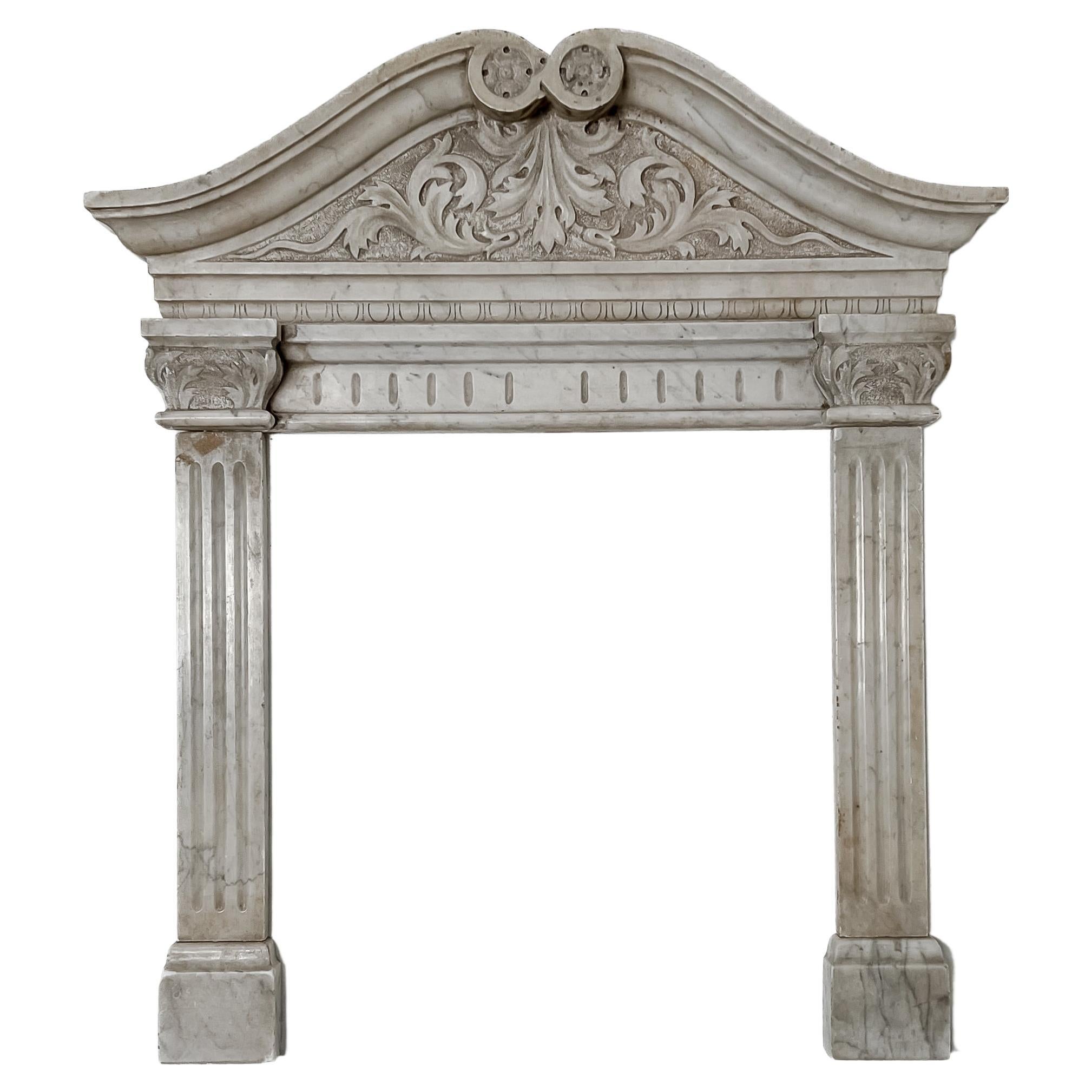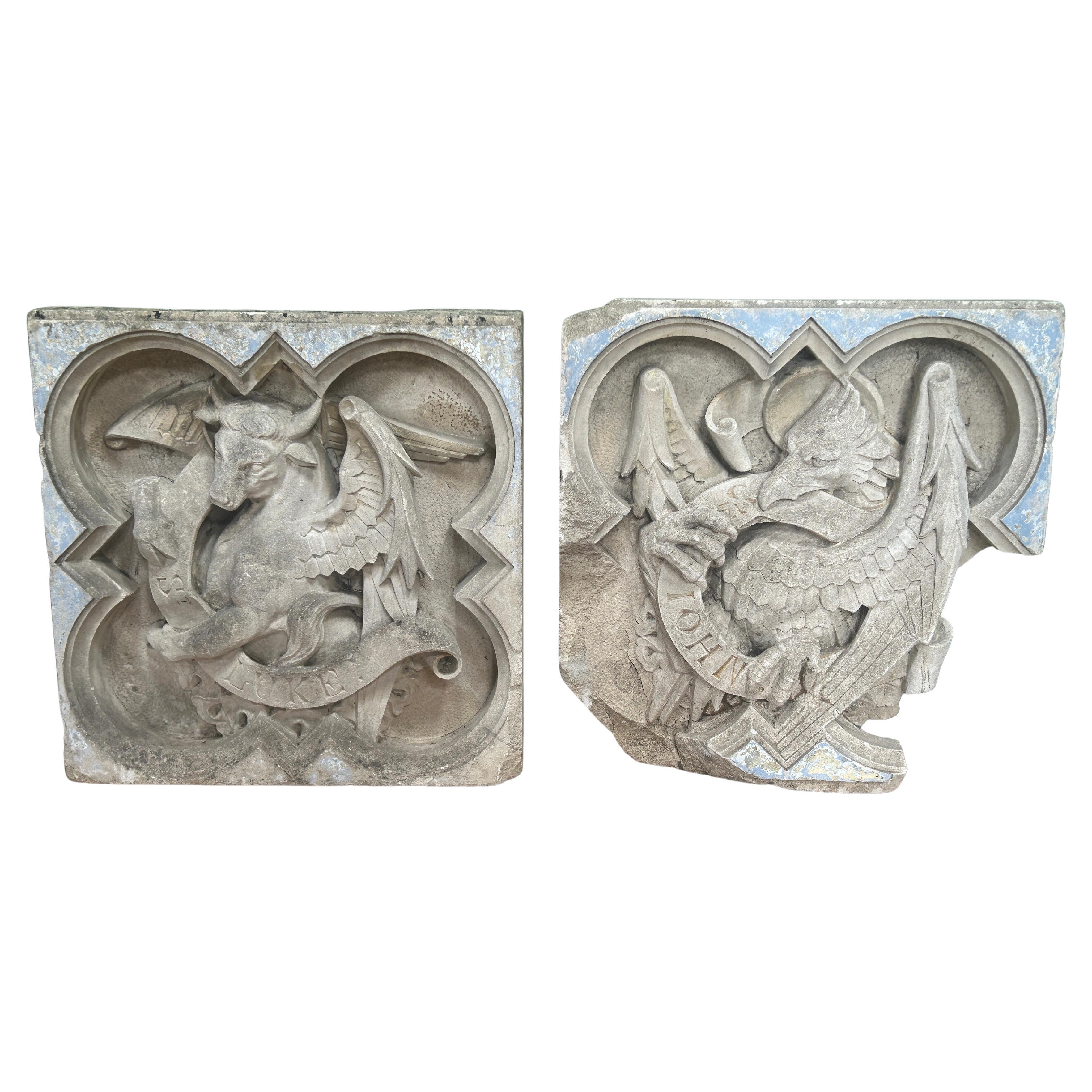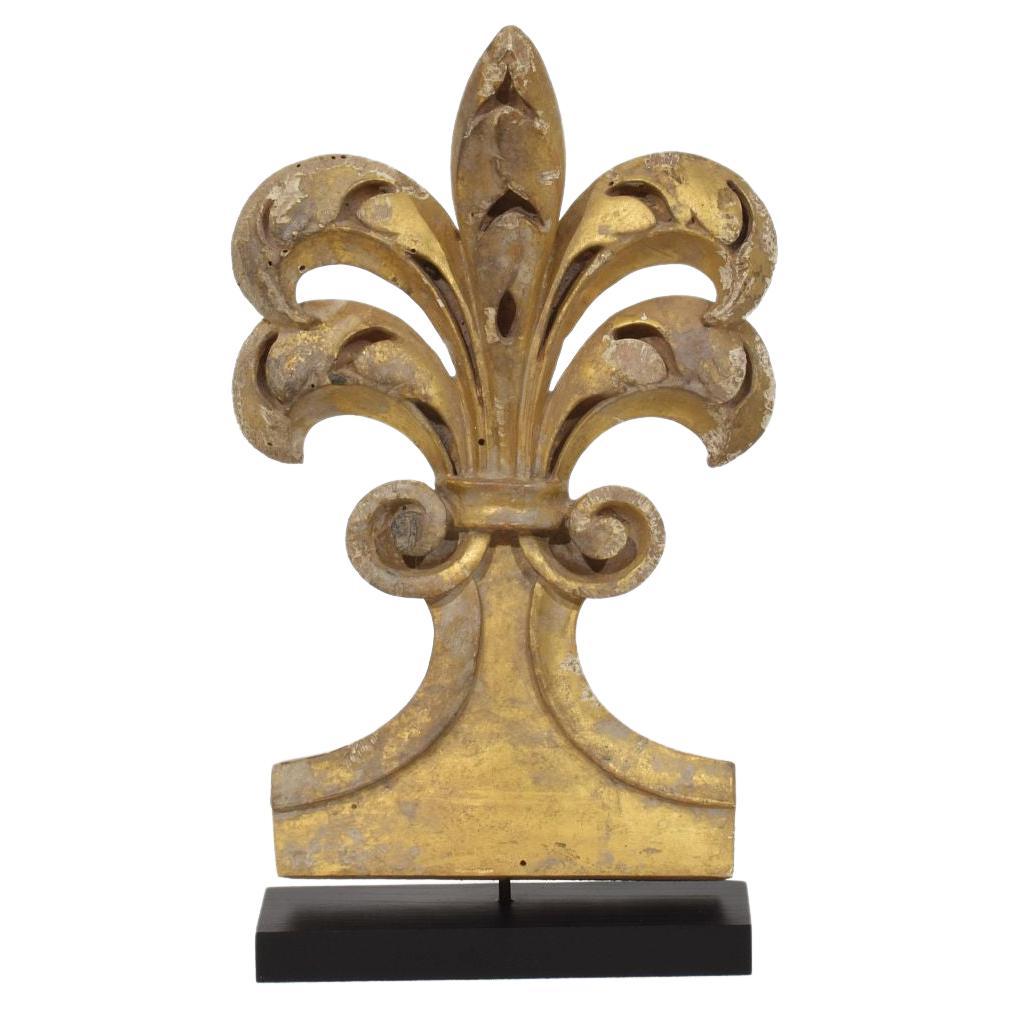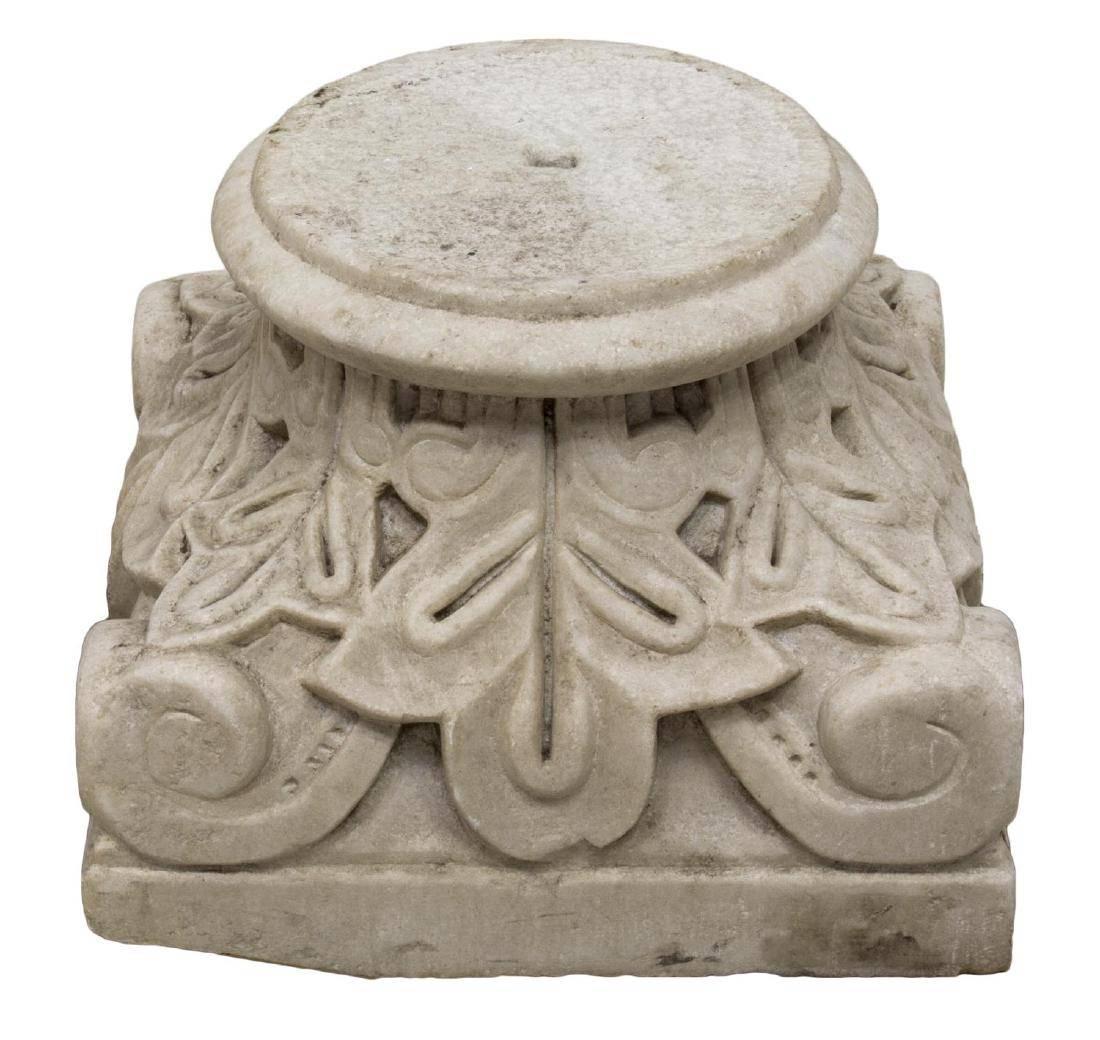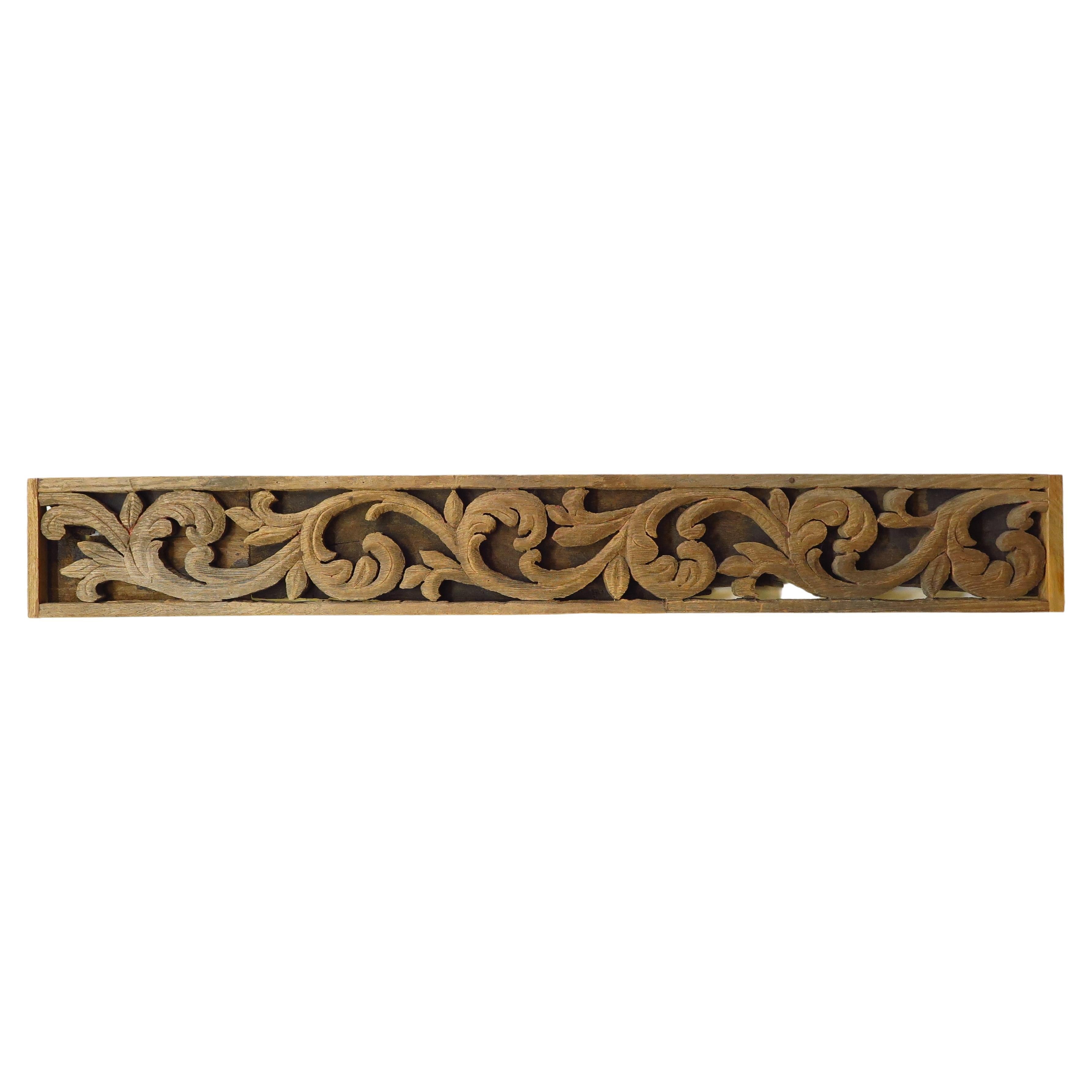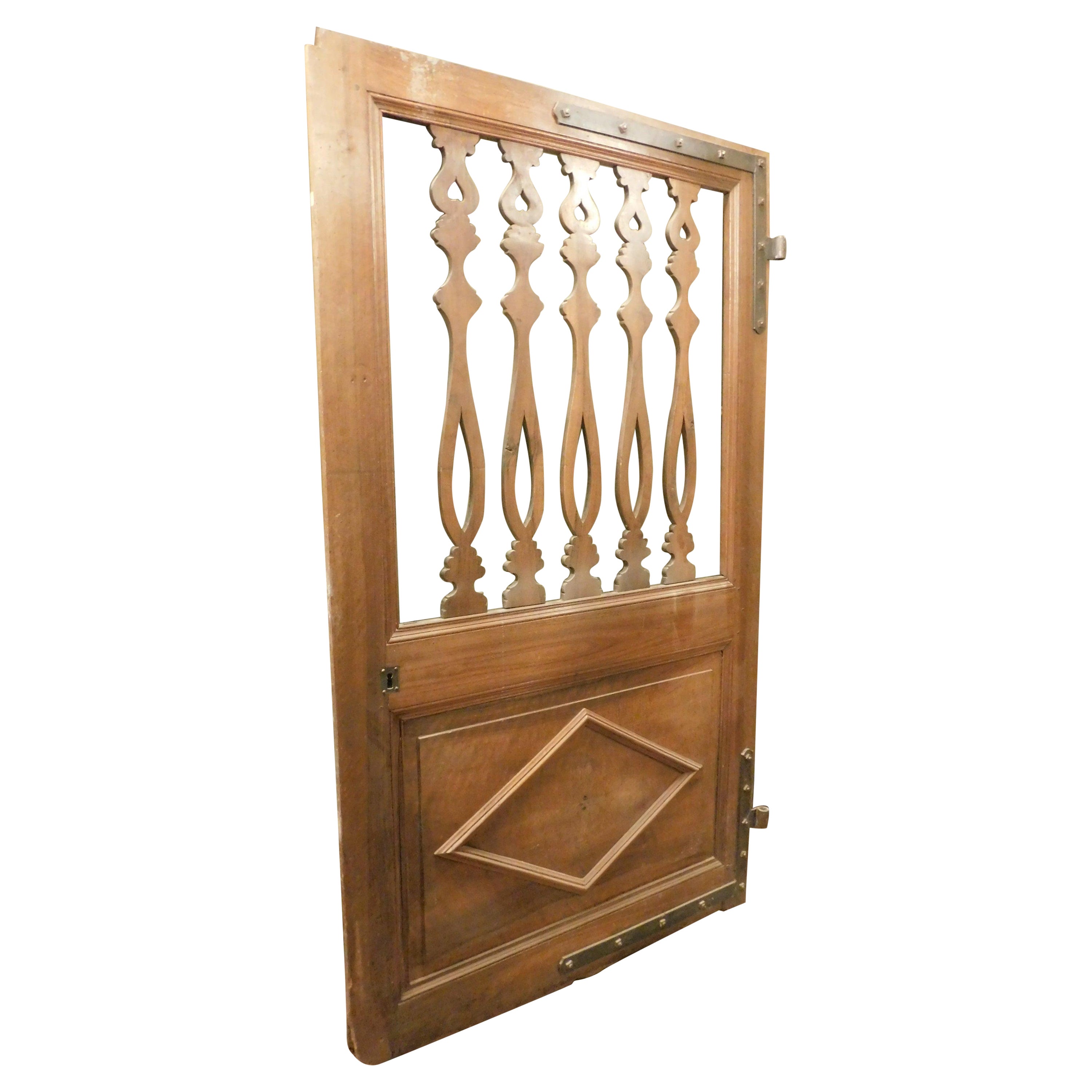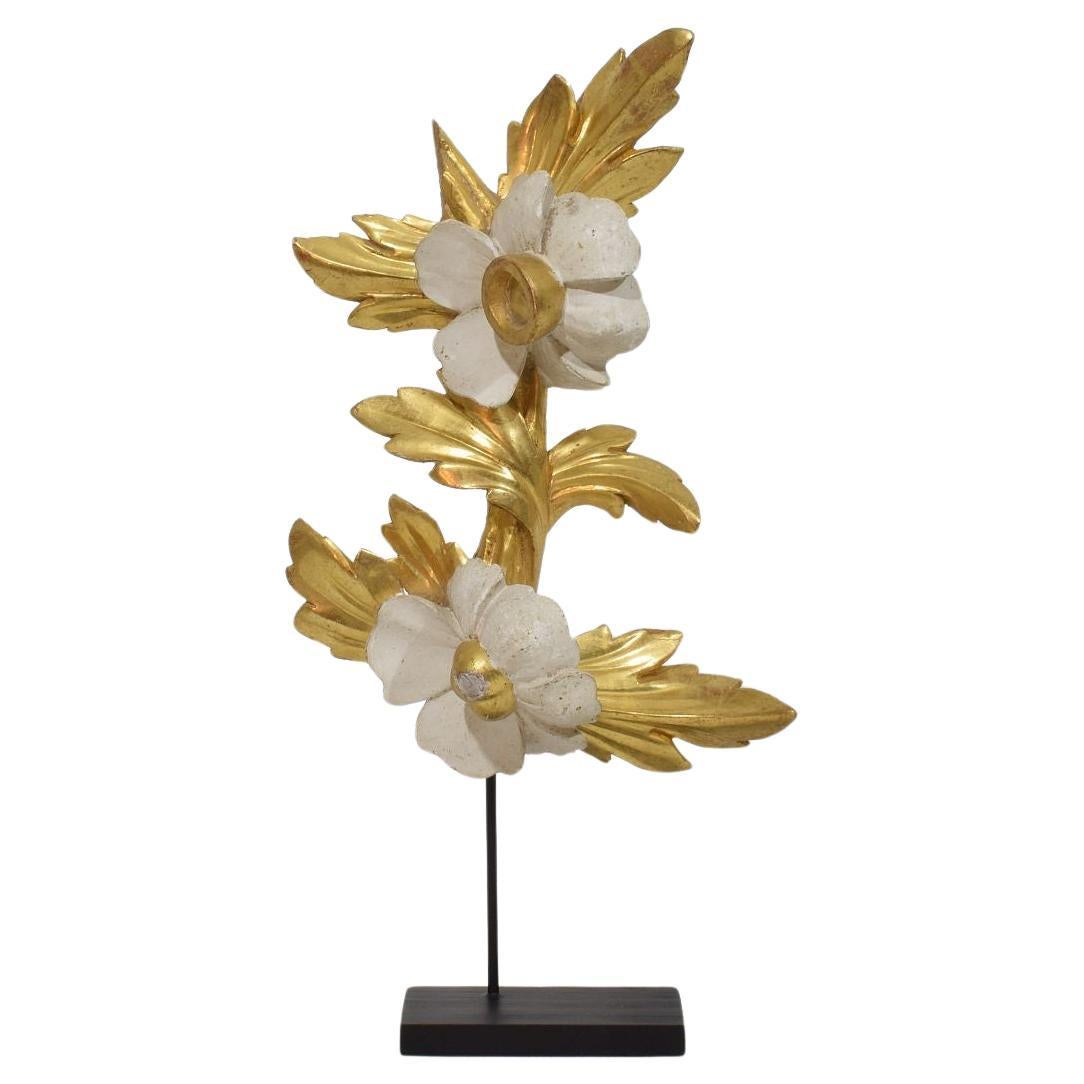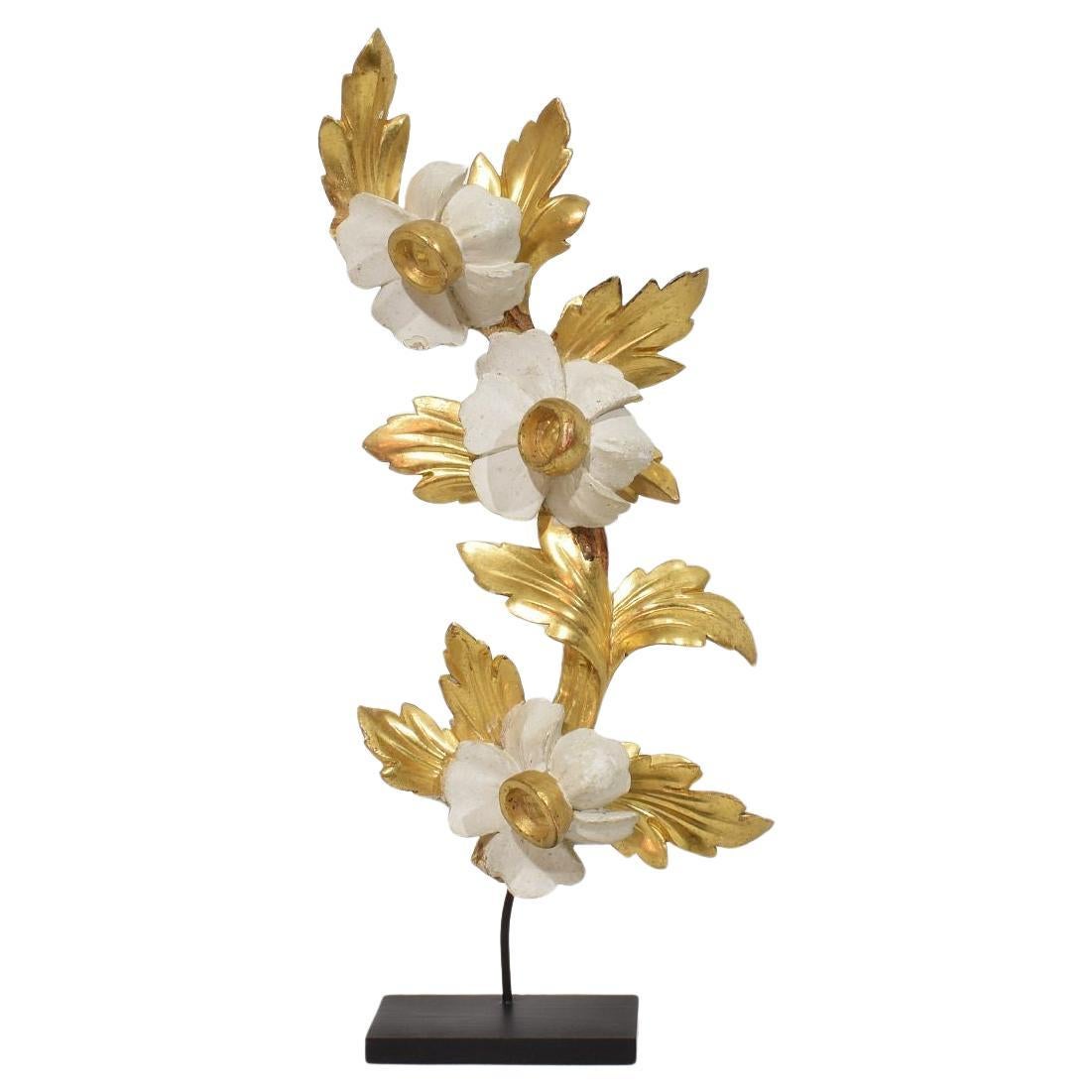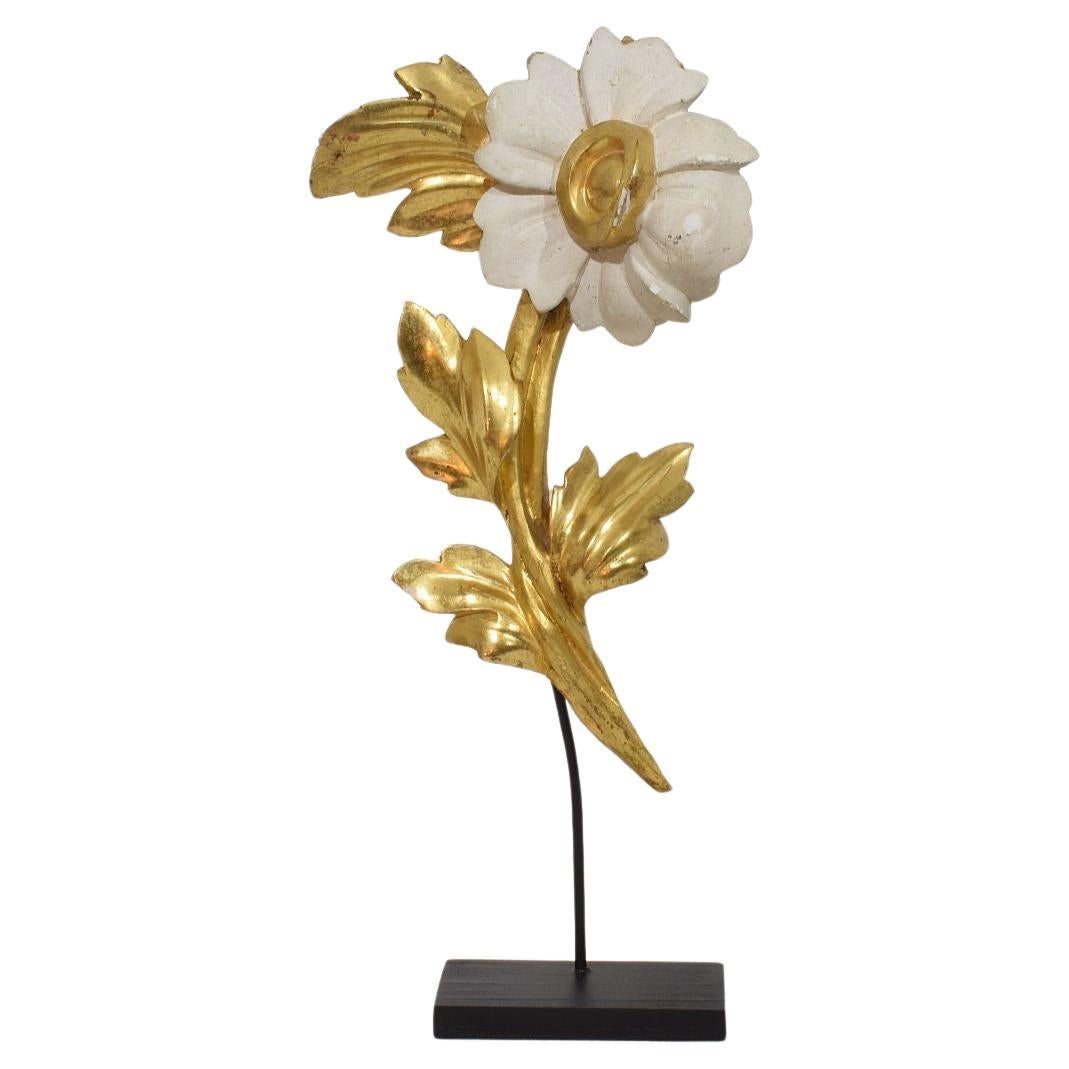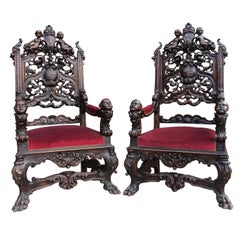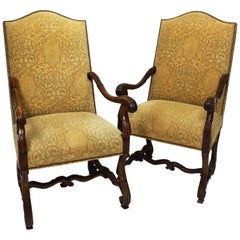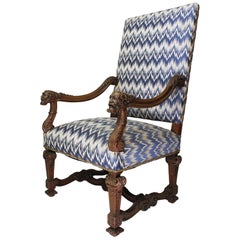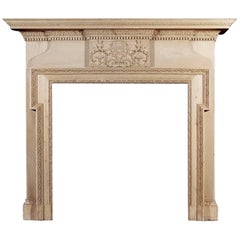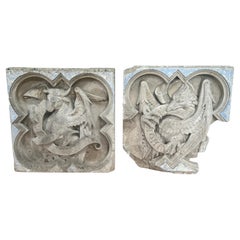
Rare Italian 19th Century Carved Pine Catholic Church Confessional Stall, Booth
View Similar Items
Want more images or videos?
Request additional images or videos from the seller
1 of 13
Rare Italian 19th Century Carved Pine Catholic Church Confessional Stall, Booth
Price:$8,450
About the Item
- Dimensions:Height: 77 in (195.58 cm)Width: 40.75 in (103.51 cm)Depth: 32.63 in (82.89 cm)Seat Height: 20.25 in (51.44 cm)
- Style:Baroque Revival (In the Style Of)
- Materials and Techniques:
- Place of Origin:
- Period:
- Date of Manufacture:circa 1890
- Condition:Wear consistent with age and use. Minor losses. Minor fading. A great conversation piece. Overall in good original condition. Some evidence of minor old wood termite rot. The Papal insignia is removable for shipping. Some scratches and wear. Please view all images.
- Seller Location:Los Angeles, CA
- Reference Number:Seller: Ref.: A2366 1stDibs: LU1796212766062
About the Seller
5.0
Vetted Professional Seller
Every seller passes strict standards for authenticity and reliability
Established in 1982
1stDibs seller since 2016
133 sales on 1stDibs
Typical response time: 1 hour
Authenticity Guarantee
In the unlikely event there’s an issue with an item’s authenticity, contact us within 1 year for a full refund. DetailsMoney-Back Guarantee
If your item is not as described, is damaged in transit, or does not arrive, contact us within 7 days for a full refund. Details24-Hour Cancellation
You have a 24-hour grace period in which to reconsider your purchase, with no questions asked.Vetted Professional Sellers
Our world-class sellers must adhere to strict standards for service and quality, maintaining the integrity of our listings.Price-Match Guarantee
If you find that a seller listed the same item for a lower price elsewhere, we’ll match it.Trusted Global Delivery
Our best-in-class carrier network provides specialized shipping options worldwide, including custom delivery.More From This Seller
View AllPair of Italian 19th Century Renaissance Style Carved Figural Throne Armchairs
Located in Los Angeles, CA
A fine and palatial pair of Italian 19th century renaissance style carved walnut figural throne armchairs. The intricately carved Baroque frames with the backrests depicting a pair o...
Category
Antique Late 19th Century Baroque Revival Armchairs
Materials
Velvet, Walnut
$24,850 Sale Price / set
29% Off
Pair of Italian 19th-20th Century Baroque Style Walnut Carved Throne Armchairs
Located in Los Angeles, CA
A fine pair of Italian 19th-20th century Baroque Revival style walnut figural carved high-back throne armchairs, each upholstered in a floral cream silk and gold fabric...
Category
Antique Early 1900s Italian Baroque Revival Armchairs
Materials
Fabric, Walnut
Pair of 19th Century Baroque Revival Style Carved Walnut Throne Armchairs
Located in Los Angeles, CA
A fine pair of Italian 19th century Baroque Revival style carved walnut throne armchairs. The high-back frames with recent upholstered back and seat and open carved scrolled armrests...
Category
Antique 19th Century Italian Baroque Revival Armchairs
Materials
Fabric, Walnut
Fine French 19th Century Louis XIV Style Baroque Carved Walnut Throne Armchair
Located in Los Angeles, CA
A fine French 19th century Louis XIV style Baroque Revival carved walnut throne armchair. The upholstered back and seat frame with open scrolled and carved armrests with carvings of ...
Category
Antique Late 19th Century French Baroque Revival Armchairs
Materials
Fabric, Walnut
In Manner of Andrea Brustolon Venetian 19th Century Carved Walnut Figural Throne
By Valentino Panciera Besarel
Located in Los Angeles, CA
A fine Italian 19th century baroque revival style carved walnut figural throne armchair, attributed to Valentino Panciera Besarel (Venice, 1829-1902) in the manner of Andrea Brustolo...
Category
Antique Late 19th Century Italian Baroque Revival Armchairs
Materials
Tapestry, Walnut
$9,850 Sale Price
46% Off
An Anglo-Dutch 19th Century Walnut Carved 5 Piece Parlor Set, After Daniel Marot
Located in Los Angeles, CA
A Fine Anglo-Dutch 19th Century Baroque Style Ornately Carved Walnut Five Piece Parlor - Salon Suite, After Daniel Marot (French-Dutch, 1661–1752); comprising of a settee, two armchairs and two side chairs. The intricately pierced high-backs carved frames with scrolled and floral designs, curved armrests and cabriolet conjoined legs. Circa: 1890.
Measures: Settee height: 54 3/4 inches (139.1 cm)
Settee width: 70 3/4 inches (179.7 cm)
Settee depth: 24 inches (61 cm)
Armchairs Height: 52 inches (132.1 cm)
Armchairs Width: 28 inches (71.1 cm)
Armchairs Depth: 21 1/2 inches (54.6 cm)
Side chairs Height: 50 inches (127 cm)
Side chairs Width: 21 1/2 inches (54.6 cm)
Side chairs Depth: 20 1/2 inches (52.1 cm)
Seat height: 20 3/8 inches (51.8 cm).
Daniel Marot or Daniel Marot the Elder (1661–1752) was a French-born Dutch architect, furniture designer and engraver at the forefront of the classicizing Late Baroque Louis XIV style. He worked for a long time in England and the Dutch Republic, where he was naturalised in 1709.
Born in Paris, he was a pupil of Jean Le Pautre and the son of Jean Marot, who was also an architect and engraver. Marot was working independently as an engraver from an early age, making engravings of designs by Jean Bérain, one of Louis XIV's official designers at the Manufacture des Gobelins, where far more than tapestry was being produced. The family were Huguenots and were part of the wave of émigrés who left France in the year of the Edict of Fontainebleau and Revocation of the Edict of Nantes (1685) to settle in Holland. Daniel Marot brought the fully developed court style of Louis XIV to Holland, and later to London. In the end, the English style which is loosely called "William and Mary" owed much to his manner.
In the Dutch Republic, Marot was employed by the Stadthouder, who later became William III of England; in particular, he is associated with designing interiors in the palace of Het Loo, from 1684 on. Though his name cannot be attached to any English building (and he does not have an entry in Howard Colvin's exhaustive Dictionary of British Architects) we know from his own engraving that he designed the great hall of audience for the States-General at the Hague. He also decorated many Dutch country-houses, introducing the “salon” and popularizing ornamented ceilings in The United Provinces/ Netherlands.
State bed, designed by Daniel Marot, engraving, ca 1702
In 1694, he traveled with William to London, where he was appointed one of his architects and Master of Works. In England his activities appear to have been concentrated at Hampton Court Palace, where he designed the garden parterres, which were swept away in the following generation and have been restored at the end of the 20th century. His designs for the Great Fountain Garden survive. Much of the furniture, especially the mirrors, guéridons and state beds, in the new State Rooms readied for William at Hampton Court bears unmistakable traces of his authorship; the tall and monumental embroidered state beds, with their plumes of ostrich feathers, their elaborate valances and cantonnieres agree very closely with his later published designs.
After William's death Marot returned to Holland where he lived at the Noordeinde 164 in The Hague from 1720 until his death in 1752. The house with his salon, kitchen, hallway and possibly some of his ceilings still exists.
We owe much of our knowledge of his work to the folio volume of his furniture designs published at Amsterdam in 1712. Not surprisingly the designs show strong French and Dutch influences; what reads as their "English" look is more probably the result of Marot's court style on other London designers.
Marot was a nephew of Pierre Gole...
Category
Antique Late 19th Century Italian Baroque Revival Living Room Sets
Materials
Walnut
$24,850 Sale Price / set
28% Off
You May Also Like
Mid-19th Century Antique English Carved Pine Fireplace
Located in London, GB
A mid-19th century English carved pine fireplace, with carved leaf and dentils to cornice, carved patera and foliage to centre frieze and leaf and rope twist around inner mouldings.
...
Category
Antique 19th Century English Architectural Elements
Materials
Pine
Reclaimed Catholic Church Marble Surround
Located in Mckinney, TX
Found in Nebraska, dating to the mid-19th century, this surround was reclaimed from a Catholic church and once framed a memorial, plaque, or the like. A wonderful decorative fragment, hand-carved from Carrara marble, the surround consists of 6 separate pieces including a pediment, entablature (which includes the Corinthian volute), two Corinthian columns, and two plinths. A wonderful piece of history the piece could be installed again to surround a small window, a powder room mirror...
Category
Antique Mid-19th Century American Architectural Elements
Materials
Carrara Marble
Pair of 19th Century Religious Carved Stone Church Plaques of St Luke & St John
Located in London, GB
Architectural Antique Church Stone Plaques of St Luke & St John, Antique Religious Sculptures, Church Antique Plaques, Religious Antique Relief Sculptures...
Category
Antique 1840s English Gothic Revival Architectural Elements
Materials
Stone
19th Century Italian Carved Marble Column Capital
Located in Austin, TX
A stately and well carved marble Corinthian column capital, 19th century, Italy.
Presented and displayed inverted, with a typical decorative motif of acanthus and volute.
Perfect f...
Category
Antique Mid-19th Century Italian Classical Roman Architectural Elements
Materials
Marble
19th Century Italian Hand Carved Giltwood Gothic Style Ornament/ Fragment
Located in Buisson, FR
Beautiful handcarved giltwood gothic style ornament that once adorned a chapel or a church.
Italy, circa 1850. Weathered and small losses. Measurement includes the wooden base.
H:31,...
Category
Antique 19th Century Italian Gothic Revival Architectural Elements
Materials
Wood
$270 Sale Price
52% Off
19th Century Carved Wood Panel
Located in New York, NY
19th Century carved wood panel with lotus bud motive. An Architectural Element from a Buddhist Monastery in Northen Thailand. A Lotus Bud representi...
Category
Antique Early 1800s Thai Other Architectural Elements
Materials
Teak

